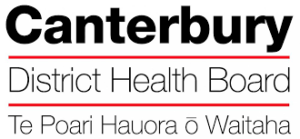
I have a lot of time for Andrew Little. He is a man of absolute integrity. But he does need to be very careful about the quality of advice that he is receiving, and who he is listening to, in relation to CDHB.
The announcement on Friday that $154m capital has been approved for a partially completed Tower 3 ward block (two wards only fitted out) and some further capital available for helping deal with clinical issues in Parkside would normally have been met with excitement and a sense of moving forward. Unfortunately, the problem that I now have is that having gone back and reviewed material released under the Official Information Act (OIA) it is hard not to form the view that Canterbury has been well and truly screwed.
The Director General of Health commissioned EY at the end of 2019 to undertake a review of the clinical and capacity modelling underpinning the then draft Christchurch Hospital business case. The purpose of the review was to provide confidence for the Ministry of Health, and the Hospital Redevelopment Partnership Group, that the assumptions and calculations underpinning the draft Indicative Business Case were correct. This information was used to develop the detailed business case jointly commissioned by the MOH and CDHB completed in September 2019 (by EY).
Of note are the key recommendations from that report:
- That the need to replace existing wards and add ward space is urgent. While the Panel was not able to directly compare or prioritise across all New Zealand hospitals, we would recommend Tower 3 and Tower 4 be commissioned sooner than the currently proposed 2023 and 2025 dates, subject to construction logistics.
- Ideally the residual 112 beds in Parkside should be included in the Tower 4/Podium build to have all inpatient spaces upgraded to a contemporary standard before 2025.
- If possible, more “freeboard” should be allowed for in the matching of bed numbers to demand. There is significant upside risk of demand being higher, while the downside risk of having some spare capacity actually can allow more efficient hospital operation, with more patients on home wards getting more focused care, and reducing length of stay
- The proposal to use Riverside East as workspaces/offices is strongly supported
- We are supportive of the proposed four theatre in the central podium before 2025.
A few further key findings contained in the EY review:
- Demand modelling for inpatient beds has been appropriately conducted
- Modelling for theatres appears to have been appropriately conducted
- We do expect the insourcing theatre work will be the most efficient operational mode.
- The outdated nature of the wards in the Riverside and Parkside buildings were noted in 2008. Ten years later the incongruence with contemporary standards and practices is even more evident. Even without the earthquake damage these wards would have been replaced.
- Key issues include undersized toilets and showers, lack of Ensuite toilet, lack of single / isolation rooms, narrow corridors and small rooms, lack of storage, poor clinical workspaces and sightlines to ill patients, unhygienic kitchen facilities, lack of privacy, mixed gender rooms, ventilation and a lack of clinical handover and teaching spaces.
- Clinical risk, particularly cross-infection was rated as high by the panel.
- Corridor clutter, tight toilet and shower spaces and narrow areas around beds provide increased health and safety risks to staff.
- From a clinical point of view compounding issue is where the earthquake strengthening required reduces the utility of the building – for example adding Ensuites is expected to reduce the ward size to 22 beds: less efficient for nursing staffing.
I am still struggling to reconcile the information that was commissioned by the MOH and that was used to complete the Detailed Business Case in September 2019 with what has just been announced.
That Business Case was fully endorsed by the then DHB Board. That approved Business Case (incidentally developed and written by EY) does not compare with what has just been approved and announced in November 2020.
How can things be so different? How can the MOH and EY develop a full detailed business case, then fundamentally change their mind? This is at odds with what their own analysis and reviews have demonstrated that is needed. It ignores what clinical teams in Canterbury have been expressing very loudly and clearly as to what is required.
What this highlight is that there is something deeply, deeply wrong with the process and that this undermines any trust and confidence in the decisions being made by the MOH, Crown Monitor and Board of the DHB. It is so very wrong and flies in the face of the evidence and the facts.
The more I re-read information that has been released as part of the OIA process over the years, the more I am seeing decisions that are not in the best interests of this community. I am truly worried that what has been an amazingly effective health system in Canterbury is now trying to be systematically being taken apart.
“Just because you keep repeating the same bullshit, doesn’t make it right”.
Here’s the article in the Press: New Christchurch Hospital building gets additional $154m cash injection | Stuff.co.nz
Leave a Reply